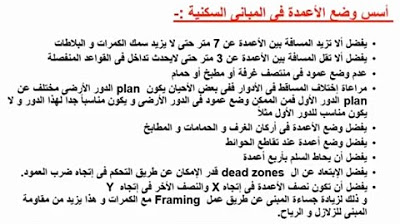PRINSIP PENATAAN Dalam Desain ARSITEKTUR - Belajar Arsitektur
Summary
TLDRThis video focuses on key architectural design principles essential for students and professionals. The speaker covers six core principles: 'Tumbuh' (Axes) for organizing space, 'Simetri' (Symmetry) for balance, 'Hirarki' (Hierarchy) to emphasize important elements, 'Repetisi' (Repetition) to unify design, 'Datum' (Datum) as guiding elements, and 'Transformasi' (Transformation) for manipulating design elements. These principles are foundational for creating functional, aesthetic, and harmonious architectural spaces, making the content valuable for aspiring architects and urban designers.
Takeaways
- 😀 The video shares principles of design in architecture, aimed at students and viewers to provide valuable insights.
- 😀 The principles discussed are foundational for architecture students and professionals when practicing in the field.
- 😀 The first principle is the concept of 'axis' (sumbu), which involves the connection of two or more points in space to form a linear path.
- 😀 'Axis' is not limited to two-dimensional space and can apply in three dimensions, influencing movement and visual perception.
- 😀 An 'axis' should be linear, connecting the shortest distance between two points, and can be strengthened by surrounding elements.
- 😀 The second principle is symmetry, which refers to balance and equal form or space around a central axis or point.
- 😀 Symmetry can be bilateral (balanced around one axis) or radial (balanced around multiple intersecting axes).
- 😀 The third principle is hierarchy, which emphasizes the importance of certain elements based on size, shape, or positioning in relation to other elements.
- 😀 Hierarchy can be observed through size, shape, or spatial arrangement, highlighting what’s most important in a design.
- 😀 The principle of repetition uses rhythmic patterns and repetition of forms, size, or detail to create organized, cohesive designs.
- 😀 'Datum' is a guiding element that organizes and collects different elements in a design, whether through lines, planes, or spaces.
- 😀 The principle of transformation involves adapting and manipulating architectural models, structures, or elements to improve functionality and design outcomes.
Q & A
What is the principle of 'tumbuh' in architecture?
-The principle of 'tumbuh' refers to the axis formed by two or more points in a space, which serves as a foundation for organizing other shapes and spaces along its path. It is a straight line connecting two distant points, and it must be linear.
Can curves be considered part of a 'tumbuh' axis in architecture?
-No, according to architectural theory, an axis must be linear, meaning the shortest distance between two points. Curves connecting two points do not qualify as an axis.
What is an example of the 'tumbuh' principle in a real-world city?
-An example is the imaginary axis in the city of Yogyakarta, which connects landmarks such as Mount Merapi, Tugu Jogja, the Yogyakarta Kraton, and ends at the southern coast.
What does symmetry in architectural design refer to?
-Symmetry in architecture refers to the balanced arrangement of forms and spaces, either around a central point (radial symmetry) or along a central line (bilateral symmetry). It creates harmony and a sense of equilibrium in design.
What is the difference between bilateral and radial symmetry?
-Bilateral symmetry involves balancing elements on either side of a central axis, while radial symmetry involves elements arranged around a central point, radiating outwards in multiple directions.
How does hierarchy manifest in architectural design?
-Hierarchy in architecture highlights certain elements by their size, shape, or placement relative to other components. Larger objects, unique forms, or strategically placed features are emphasized to indicate their importance.
Can you give an example of hierarchy in an architectural structure?
-An example of hierarchy in architecture is the Borobudur Temple, where the central stupa is the most prominent feature, drawing attention as the focal point of the entire complex.
What is the role of repetition in architectural design?
-Repetition in architecture involves using the same patterns or elements multiple times, creating rhythm and visual harmony. This could be through repeated shapes, sizes, or even details in different parts of the design.
What does 'datum' mean in the context of architecture?
-In architecture, a datum is a line, plane, or space that helps organize and group other elements together. It provides visual continuity and serves as a reference point to align the design components.
How can 'datum' be used in architectural design?
-Datum can be implemented as a guiding line or surface that unifies elements of different shapes or sizes within a space. It may take the form of a line that connects various objects or a background surface that organizes the space visually.
What does transformation refer to in architectural design?
-Transformation in architecture refers to the process of modifying a design element through abstract manipulation while preserving its core structure. This allows architects to innovate and adapt designs to meet specific needs while maintaining the original concept.
Outlines

Esta sección está disponible solo para usuarios con suscripción. Por favor, mejora tu plan para acceder a esta parte.
Mejorar ahoraMindmap

Esta sección está disponible solo para usuarios con suscripción. Por favor, mejora tu plan para acceder a esta parte.
Mejorar ahoraKeywords

Esta sección está disponible solo para usuarios con suscripción. Por favor, mejora tu plan para acceder a esta parte.
Mejorar ahoraHighlights

Esta sección está disponible solo para usuarios con suscripción. Por favor, mejora tu plan para acceder a esta parte.
Mejorar ahoraTranscripts

Esta sección está disponible solo para usuarios con suscripción. Por favor, mejora tu plan para acceder a esta parte.
Mejorar ahoraVer Más Videos Relacionados

محاضرة 41 ( الـ Statical System _ أسس وضع الأعمدة جزء 1 ) هشام طارق

How to Develop Concepts in Architecture School - Impress Your Teachers

Design for Impact Summit 2021

Desain Grafis Percetakan - Dasar Desain Grafis dan Nirmana kelas XI

NSCP 2015 LOAD PROVISION AND LOAD COMBINATIONS

Sistem MEP pada Gedung Bertingkat
5.0 / 5 (0 votes)
